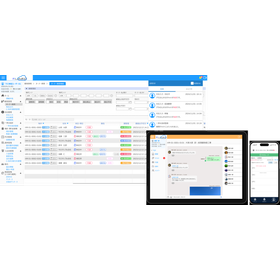Quick and accurate response to issues! It is definitely effective in equipment maintenance.
We would like to introduce a case where the lightning and weather information provision system "Lightning Scope Plus" was implemented at Hanno Cable Television Co., Ltd. Minimizing the impact of lightning and achieving recovery as quickly as possible is a common challenge for cable television stations. Since cable television is a service that is expected to be received without issue, not being able to broadcast due to lightning would make it unviable as a business. By implementing this product, we have been freed from unnecessary labor, and there is no longer a need to check the weather every evening to predict lightning. [Challenges] - If lightning strikes the cable television distribution equipment, television reception becomes impossible. - If lightning strikes the cables leading to subscriber homes, as well as the amplifiers and power supplies used for relaying, the equipment will cease to function. - If the main line becomes non-functional, all televisions in the areas served by it will simultaneously lose reception. - If lightning strikes a subscriber's home, the receiving equipment may be damaged and stop working. - Lightning can also strike power lines, causing issues with the receiving devices inside homes. *For more details, please refer to the PDF document or feel free to contact us.
Inquire About This Product
basic information
【Effects After Product Introduction】 ■ Response to issues has become quick and accurate ■ Freed from unnecessary effort ■ No longer need to check the weather every evening to predict thunderstorms *For more details, please refer to the PDF document or feel free to contact us.
Price range
Delivery Time
Applications/Examples of results
For more details, please refer to the PDF document or feel free to contact us.
catalog(2)
Download All CatalogsCompany information
Franklin Japan has been operating the Japan Lightning Detection Network (JLDN), the first and only nationwide lightning observation network in Japan, since October 1998. JLDN networks sensors installed across the country and utilizes accurate time information sent from GPS to observe the location, time, and current value of lightning strikes. The observation accuracy of JLDN boasts a capture rate of over 90% within its coverage area, with a location error of less than 500 meters, making it arguably the best lightning observation network in the world currently available. The observed lightning strike data is used in real-time for power management in factories, maintenance of networks, and protection of human life in outdoor sports.

![[Case Study] Hannō Cable Television Co., Ltd.](https://image.www.ipros.com/public/catalog/image/01/3c5/463673/IPROS38281691119444623783.jpeg?w=120&h=170)





![[Weather IoT] Remote Monitoring Type Composite Weather Observation System (Cold Region Specification)](https://image.www.ipros.com/public/product/image/e22/2000676231/IPROS72502679585379407179.png?w=280&h=280)
![Cadmium concentration in rice - Simple measurement kit [for sale]](https://image.www.ipros.com/public/product/image/42a/2001516322/IPROS157372938992547760.png?w=280&h=280)


